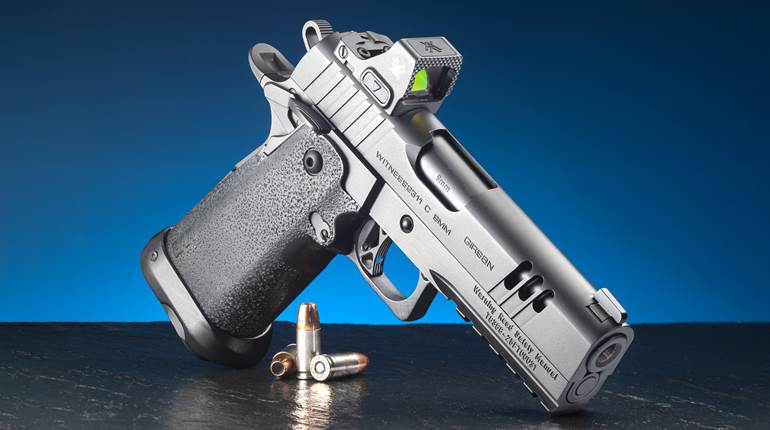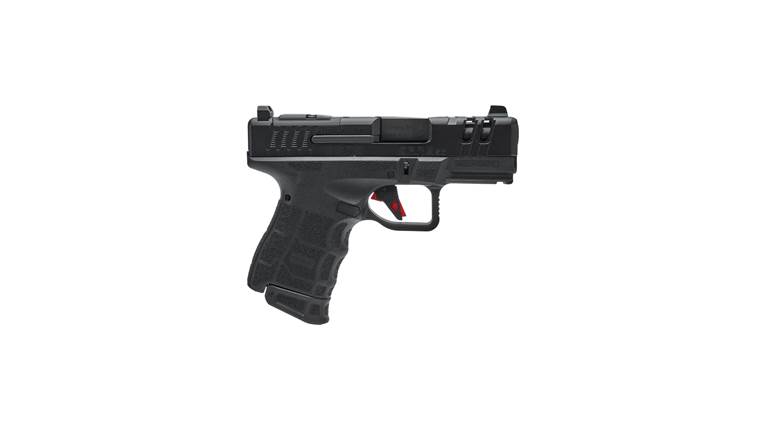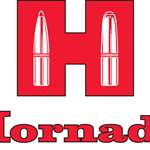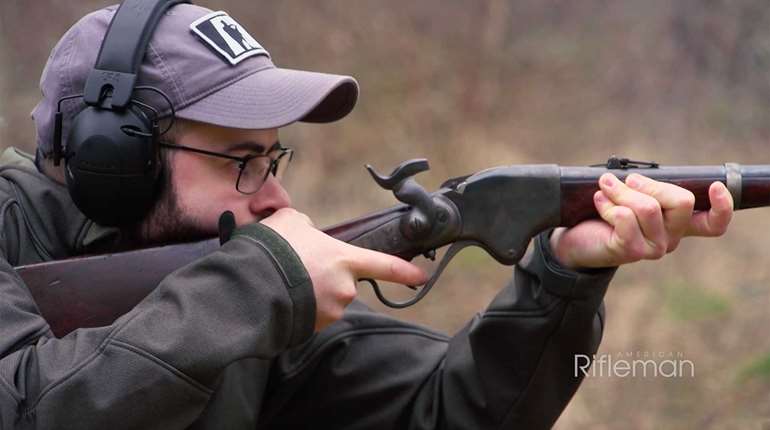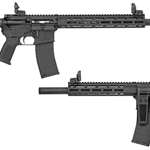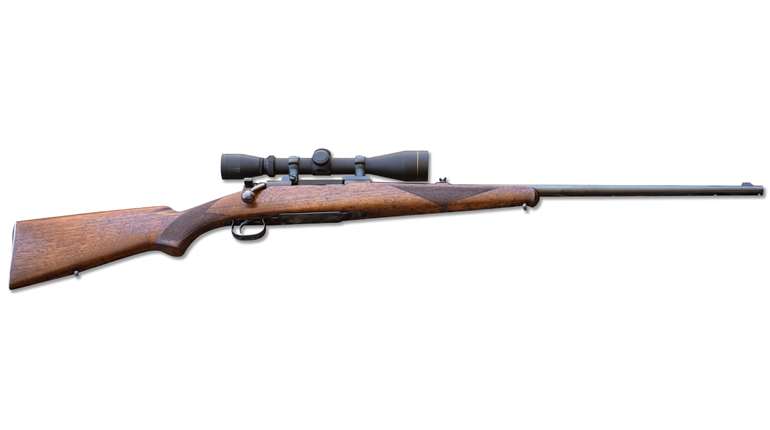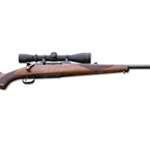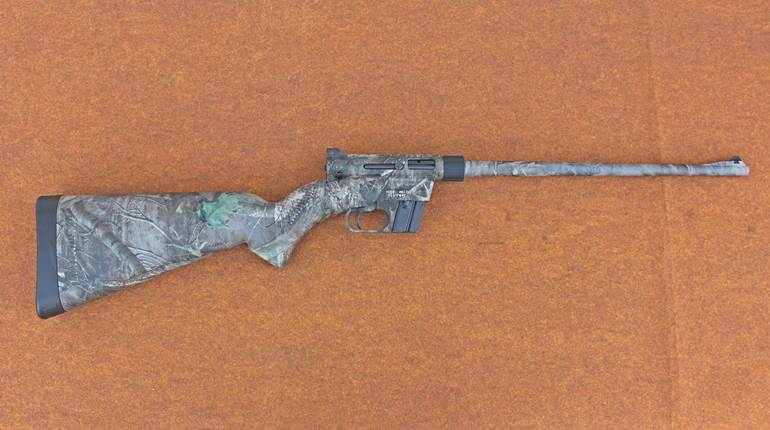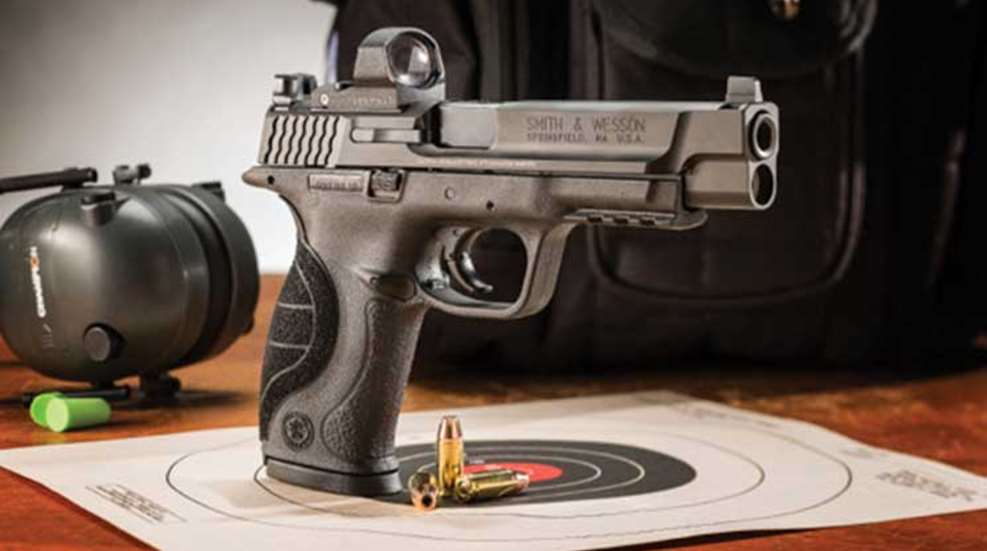
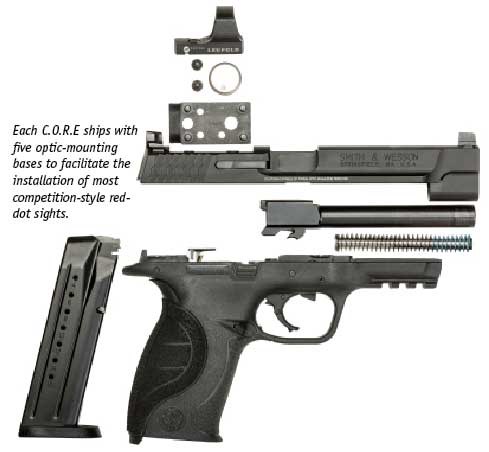
There are myriad reasons for adding an optical sight to a semi-automatic competition handgun, but certainly faster target acquisition and difficulty aligning (or even seeing) iron sights due to aging eyes top the list. Moreover, sans magnification, small, reflex-style sights permit increased situational awareness, both-eyes-open shooting and easier target engagement in varying lighting conditions. The same attributes would greatly benefit the defensive-minded homeowner.
In its C.O.R.E.-series handguns, S&W devised a fairly simple approach for affixing an optic; simply choose the correct steel optic-mounting plate and install it in the recess immediately forward of the rear sight. The optic is then mounted directly atop the plate. Included with each C.O.R.E. pistol are five bases (and the necessary screws) that accommodate six popular competition sights: Trijicon RMR; Leupold Deltapoint; JPoint; Doctor; C-More STS; and InSight MRDS. There’s also a polymer plate for use when an optic is not desired or permitted. It’s an ingenious system that requires minimal time to install or remove an optic, and the end result is not the least bit obtrusive. Holsters that work with an optic-equipped M&P C.O.R.E. are available from Blade Tech, 5.11, BlackHawk and CB Kydex Products, among others.
The system also enables co-witnessing of the red dot and the elevated iron sights so that, should the optic’s battery fail at an inopportune time, the sights are easily acquired. The sights themselves are dovetailed into place and feature the familiar three white-dot picture; the fixed rear unit is secured with a setscrew and has two dots and a 0.140"-wide notch, while the dovetailed and drift-adjustable post front sight has a single dot. Lastly, the black, Melonite-coated steel slide has aggressive wave-shaped serrations for improved purchase when racking the slide, as well as a cutout that works in unison with one on the barrel to create a window for checking the chamber’s status.
The firearm provided for evaluation was the 9 mm Luger-chambered M&P9L Pro Series C.O.R.E., which featured a 5" barrel with five-groove, 1:10"-twist rifling, though a 4¼"-barreled version is available. Both barrel length variants are available in .40 S&W as well. Beneath the barrel is the single recoil spring surrounding a guide rod—identical to those in the standard M&P-series pistols.
As with prior M&P models, the Pro Series C.O.R.E. features a polymer frame with steel slide rails and three interchangeable, textured backstraps. Exchanging the backstrap is both quick and easy; simply rotate the frame tool one-quarter turn and withdraw it from the bottom of the grip, remove the insert, install the new one, and then replace the frame tool, which secures it in place. The same tool is also used for field stripping the handgun for maintenance. Lastly, there’s an accessory rail molded into the dust cover for the addition of lasers, lights and other accessories.
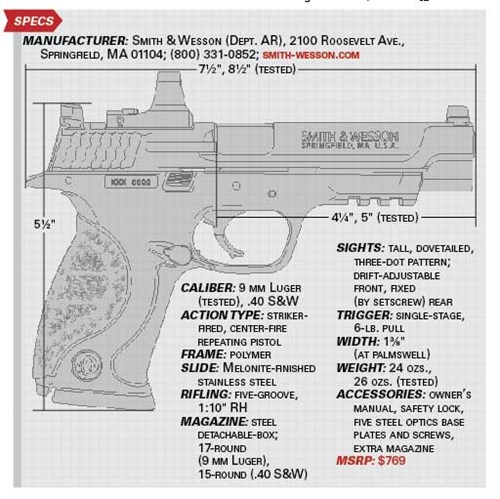
The M&PL Pro Series C.O.R.E. pistols have bilateral fire controls. The magazine-release button is reversible, though it comes factory equipped for right-handed shooters, and a slide stop appears on both sides of the gun. The only non-bilateral control is the takedown lever. As for the polymer trigger, it features an articulating section that must be pressed 1/8" rearward to permit the main trigger to move and the gun to fire. The lengthy, double-action movement gives the feeling of a two-stage trigger. The pull weight on our test sample averaged 6 lbs. exactly with zero overtravel and had a very short reset. In short, it’s a very good trigger as-is for competition. There is no external safety.
The evaluation M&P9L Pro Series C.O.R.E. shipped with two 17-round magazines, making it well-suited for competition. The .40 S&W versions ship with 15-round magazines. Regardless of capacity, the magazines have steel bodies with both witness holes and numerals for counting rounds remaining, as well as polymer baseplates and followers.
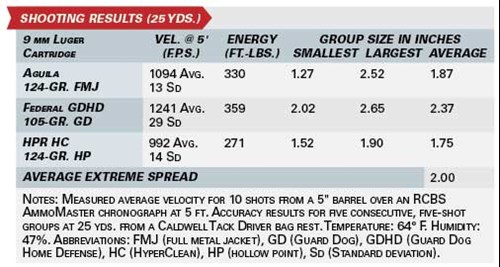
For testing, we headed to the range with an assortment of 9 mm Luger ammunition. We were more than impressed with the gun’s accuracy. In addition, we noted that the M&PL Pro Series C.O.R.E.’s 5" barrel yielded velocities for the Federal load in excess of the factory-touted number.
With accuracy testing completed, we then fed the M&PL Pro Series C.O.R.E. a hodgepodge of 9 mm Luger loads with varying weights and profiles in random order to determine its reliability. The gun digested everything without a hiccup. Moreover, thanks to the Leupold Deltapoint, during the rapid-fire sessions target acquisition was immediate, and despite firing several hundred rounds, thanks no doubt to the gun’s 26-oz. heft, there was no discomfort; in fact, it was a pleasant day at the range.
By developing the M&P Pro Series C.O.R.E. pistols, S&W brought to market handguns that are optics-ready and competition-quality, right out of the box. They’d also serve as defensive handguns, and, with a suggested retail price of $769, we consider them to be a good value, as well.














